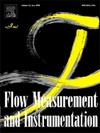非圆行星齿轮传动系统的优化设计和稳定性研究
IF 2.3
3区 工程技术
Q2 ENGINEERING, MECHANICAL
引用次数: 0
摘要
非圆行星齿轮数学模型的准确性对提高液压马达的稳定性和寿命至关重要。传统的数学模型在精度和结构复杂性方面存在局限性,在齿轮啮合过程中经常导致齿干涉问题。针对这些问题,本文采用傅里叶拟合方法构造了高阶椭圆和双弧螺距曲线,得到了连续精确的数学表达式。在此基础上,通过多体动力学仿真优化了行星齿轮的负修正系数,避免了齿间干涉。对两种非圆行星齿轮结构的稳定性特性进行了比较,结果表明,高阶椭圆齿轮比双圆弧齿轮具有更好的稳定性和更小的流量脉动。研究结果为非圆行星齿轮液压马达的优化设计提供了更为准确的理论依据。本文章由计算机程序翻译,如有差异,请以英文原文为准。
Optimization design and stability investigation of non-circular planetary gears transmission system
The accuracy of the mathematical model for non-circular planetary gears is crucial for improving the stability and lifespan of hydraulic motors. Traditional mathematical models have limitations in terms of precision and construction complexity, often leading to tooth interference issues during gear meshing. To address these problems, this paper uses Fourier fitting to construct high-order elliptical and double-arc pitch curves, obtaining continuous and precise mathematical expressions. Further, the negative modification coefficient of the planetary gears is optimized through multibody dynamic simulations to prevent tooth interference. A comparison of the stability characteristics of the two non-circular planetary gear structures shows that the high-order elliptical gear exhibits superior stability and lower flow pulsation compared to the double-arc gear. The findings provide a more accurate theoretical basis for optimizing non-circular planetary gear hydraulic motors.
求助全文
通过发布文献求助,成功后即可免费获取论文全文。
去求助
来源期刊

Flow Measurement and Instrumentation
工程技术-工程:机械
CiteScore
4.30
自引率
13.60%
发文量
123
审稿时长
6 months
期刊介绍:
Flow Measurement and Instrumentation is dedicated to disseminating the latest research results on all aspects of flow measurement, in both closed conduits and open channels. The design of flow measurement systems involves a wide variety of multidisciplinary activities including modelling the flow sensor, the fluid flow and the sensor/fluid interactions through the use of computation techniques; the development of advanced transducer systems and their associated signal processing and the laboratory and field assessment of the overall system under ideal and disturbed conditions.
FMI is the essential forum for critical information exchange, and contributions are particularly encouraged in the following areas of interest:
Modelling: the application of mathematical and computational modelling to the interaction of fluid dynamics with flowmeters, including flowmeter behaviour, improved flowmeter design and installation problems. Application of CAD/CAE techniques to flowmeter modelling are eligible.
Design and development: the detailed design of the flowmeter head and/or signal processing aspects of novel flowmeters. Emphasis is given to papers identifying new sensor configurations, multisensor flow measurement systems, non-intrusive flow metering techniques and the application of microelectronic techniques in smart or intelligent systems.
Calibration techniques: including descriptions of new or existing calibration facilities and techniques, calibration data from different flowmeter types, and calibration intercomparison data from different laboratories.
Installation effect data: dealing with the effects of non-ideal flow conditions on flowmeters. Papers combining a theoretical understanding of flowmeter behaviour with experimental work are particularly welcome.
 求助内容:
求助内容: 应助结果提醒方式:
应助结果提醒方式:


